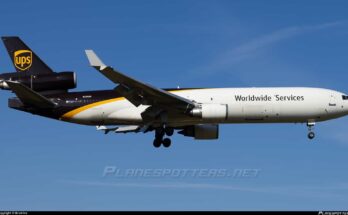
Chinese Shenyang J-15 Fighter Jet Crashes During Training Mission
A Chinese Shenyang J-15 fighter jet crashed during a routine training exercise, raising concerns about the aircraft’s safety record and operational reliability. The crash, which reportedly occurred near a military base, highlights the ongoing challenges China faces in developing and operating carrier-based fighter aircraft.
The Shenyang J-15: China’s Carrier-Based Fighter Jet
The Shenyang J-15, also known as the “Flying Shark,” is China’s primary carrier-based fighter jet, designed to operate from the country’s aircraft carriers, such as the Liaoning and Shandong. Based on the Soviet-designed Sukhoi Su-33, the J-15 has been developed by the Shenyang Aircraft Corporation for use by the Chinese Navy.
Despite being a symbol of China’s growing naval power, the J-15 has been plagued by technical issues and operational limitations. The aircraft is known for its heavy weight, which reduces its combat range when launched from China’s ski-jump-style aircraft carriers. Additionally, several accidents involving the J-15 have raised questions about its overall reliability.

Details of the Crash
According to initial reports, the J-15 was conducting a training exercise when it experienced a sudden failure, forcing the pilot to eject. The crash site was located in a remote area, and emergency response teams were dispatched immediately. The pilot survived but sustained injuries and was taken to a military hospital for evaluation.
While Chinese military officials have yet to disclose the exact cause of the crash, preliminary analysis suggests that it could have been due to mechanical failure, pilot error, or adverse weather conditions. The Chinese military is expected to conduct a full investigation to determine the root cause of the incident.
Previous J-15 Accidents and Safety Concerns
This is not the first time a J-15 fighter jet has crashed. Since its introduction into service, the aircraft has been involved in multiple accidents:
• 2016: Two J-15 jets crashed due to technical failures, leading to the deaths of two Chinese naval pilots. The incidents were attributed to issues with the aircraft’s flight control system.
• 2018: Reports surfaced of engine problems affecting the performance of the J-15, with some pilots complaining about difficulties in controlling the aircraft during carrier landings.
• 2020: A J-15 suffered damage after a hard landing on an aircraft carrier, raising further questions about the jet’s design and reliability.
The frequency of these incidents has led some analysts to speculate that China may need to develop a more advanced replacement for the J-15 in the near future.
Impact on China’s Aircraft Carrier Program
The crash of the J-15 could have significant implications for China’s aircraft carrier program. Unlike the United States, which operates a fleet of nuclear-powered carriers with advanced catapult launch systems, China still relies on older ski-jump launch technology. This limitation affects the performance of carrier-based aircraft like the J-15, restricting their range and payload capacity.
China is currently developing a new generation of aircraft carriers, including the Fujian, which is expected to feature an electromagnetic aircraft launch system (EMALS) similar to that used on the U.S. Navy’s Gerald R. Ford-class carriers. This upgrade would allow China to deploy a more advanced fighter jet, possibly a naval version of the J-20 stealth fighter or a future carrier-based aircraft.
Military and Strategic Implications
The J-15 crash comes at a time when China is expanding its military presence in the Indo-Pacific region. The Chinese Navy has been increasing its carrier operations, conducting more frequent exercises in the South China Sea and near Taiwan. The loss of a J-15 highlights the risks associated with operating older aircraft on China’s growing fleet of aircraft carriers.
From a strategic standpoint, China’s ability to maintain a reliable carrier-based air force is crucial to its ambitions of projecting power beyond its shores. The crash underscores the difficulties of developing an effective carrier aviation program, something that took the U.S. decades to perfect.

Looking Ahead: Will China Replace the J-15?
With continued concerns about the J-15’s performance, China may accelerate the development of a next-generation carrier-based fighter. The most likely successor is a naval variant of the Shenyang FC-31, a stealth fighter that could replace the J-15 in the coming years. The FC-31, often compared to the U.S. F-35, would offer improved stealth, agility, and combat capabilities.
Additionally, China is investing heavily in drone technology, with reports suggesting that unmanned aerial vehicles (UAVs) could play a significant role in future carrier operations. If successful, these advancements could mitigate the risks associated with manned fighter jet crashes.
Conclusion: A Setback for China’s Naval Aviation
The crash of the Shenyang J-15 fighter jet is a setback for China’s efforts to develop a world-class naval aviation force. While the pilot survived, the incident raises serious questions about the aircraft’s safety and reliability. As China continues to expand its military capabilities, it will need to address the challenges posed by the J-15 and invest in more advanced aircraft to support its growing aircraft carrier fleet.
For now, the Chinese military will conduct an investigation to determine the cause of the crash, while the world watches to see how China adapts and evolves its naval air power in the years to come.


